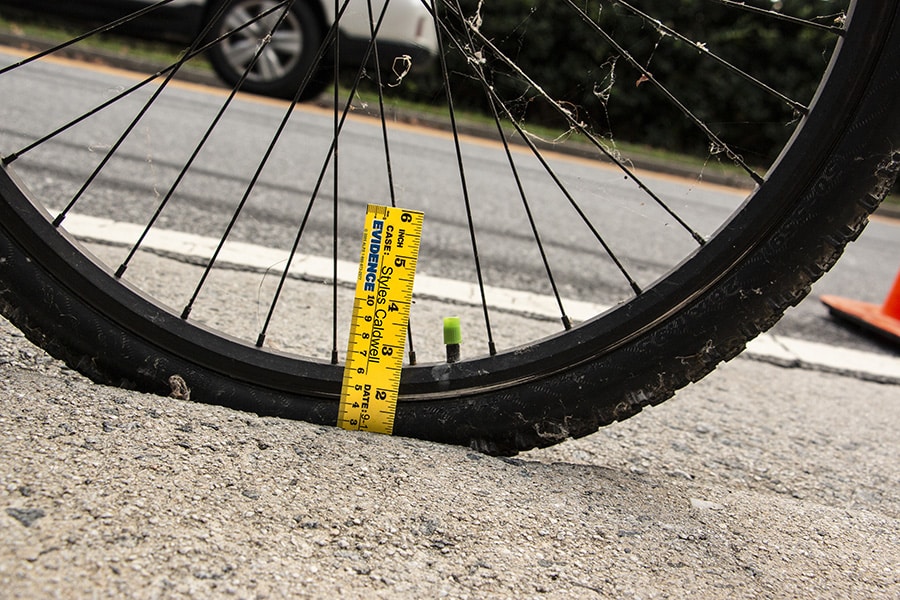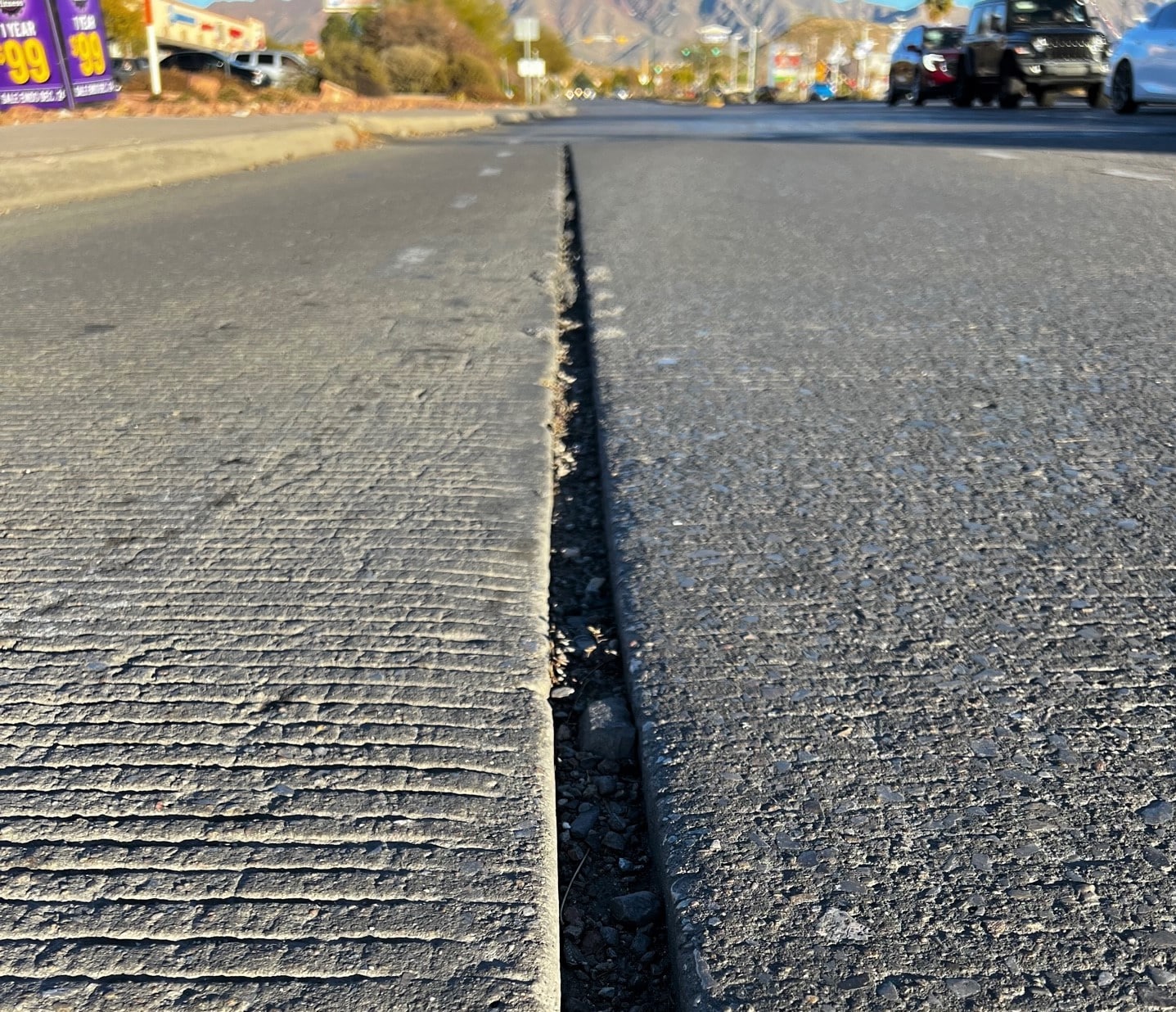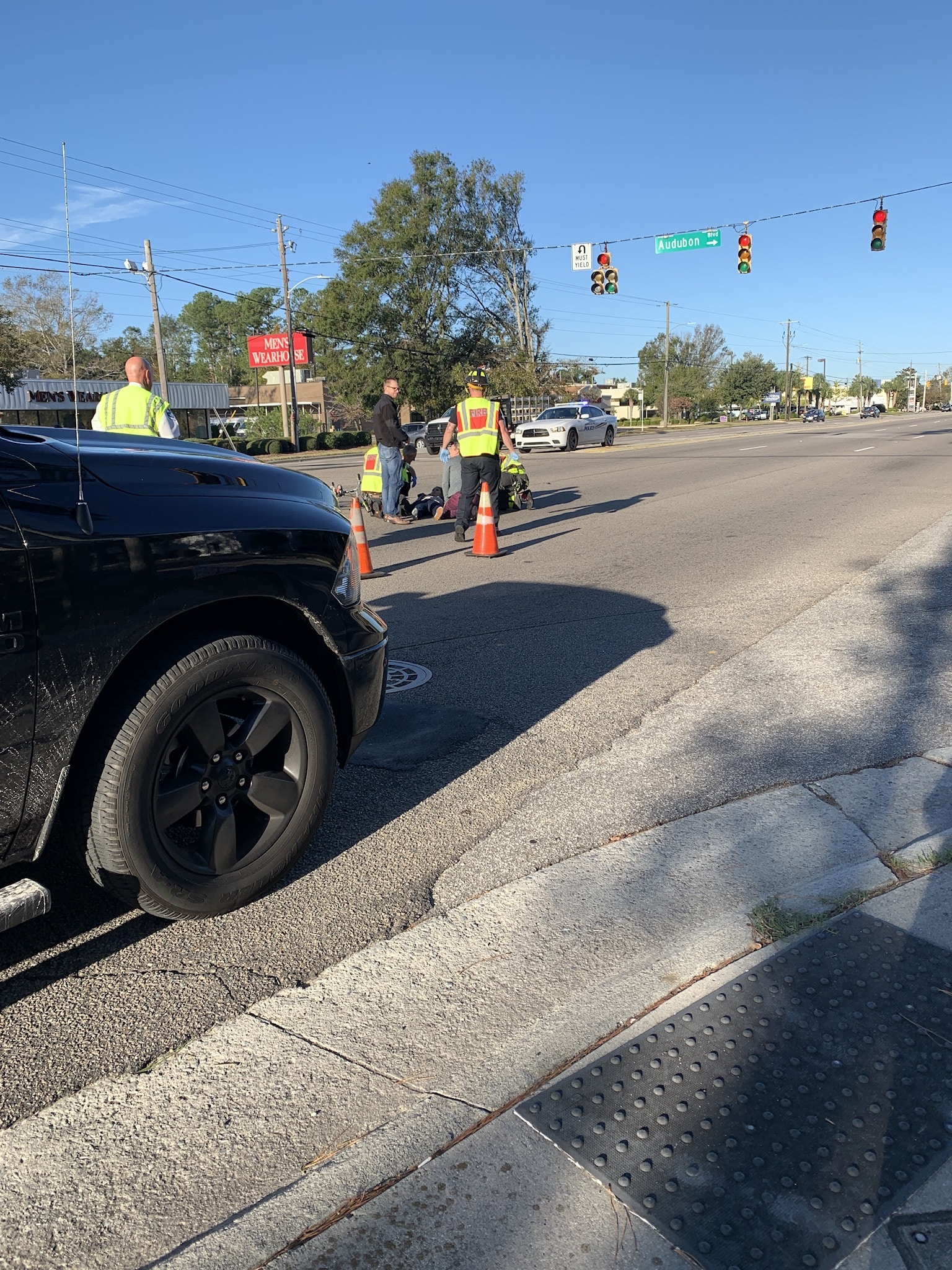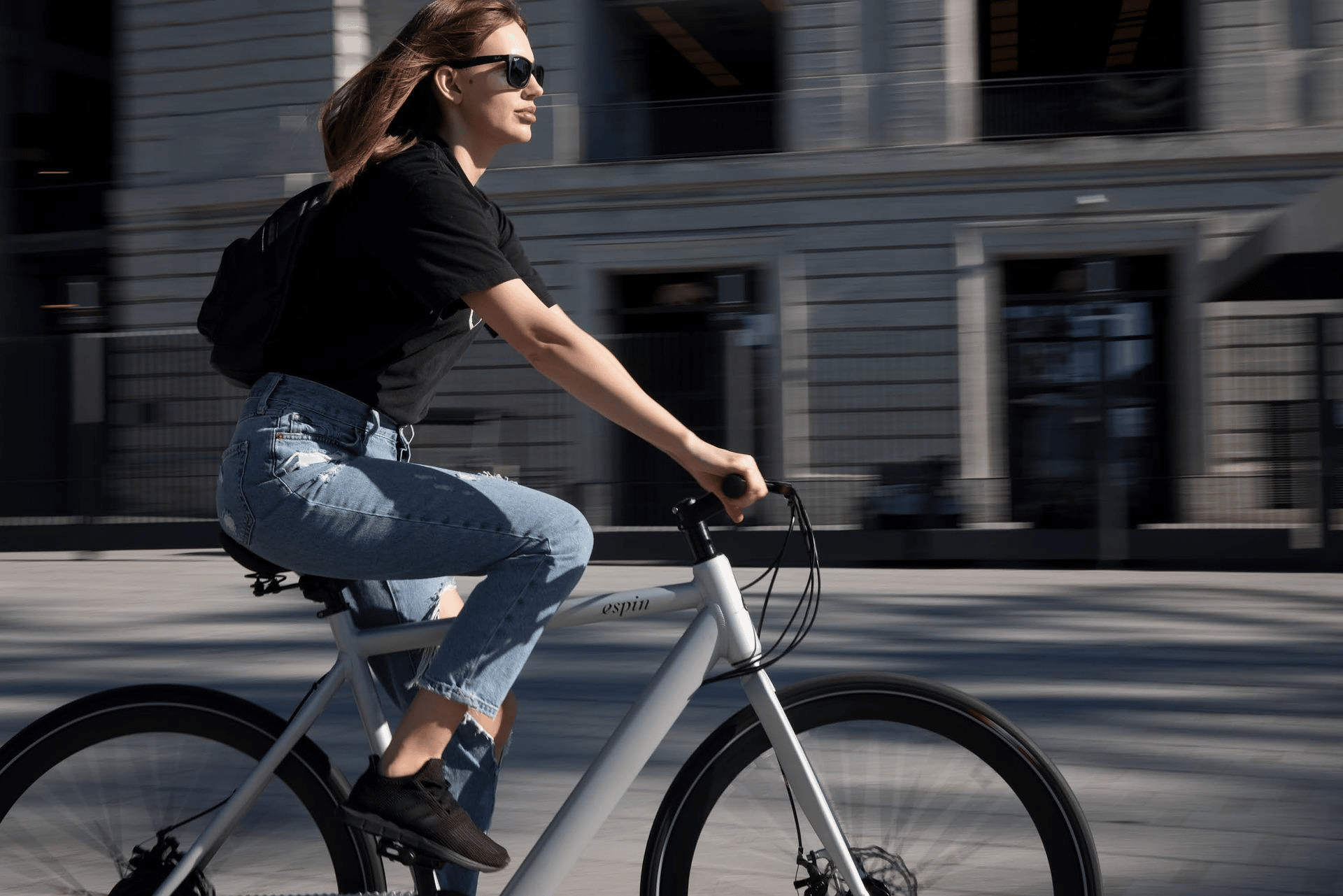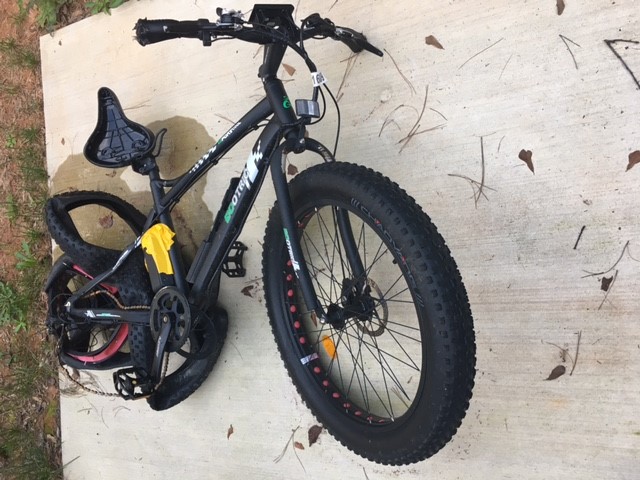Answering your Oregon Stop Questions
Stop as Yield.
It was the legislative Holy Grail for Oregon cyclists.
Idaho had pioneered the Stop As Yield concept—allowing cyclists to treat a stop sign as if it’s a yield sign—in 1982, and for decades, Idaho remained the only state where Stop as Yield was legal for cyclists, despite the actual practice being widespread, but illegal.
Related Article: Origins of Idaho’s “Stop as Yield” Law
The push to make Stop as Yield legal in Oregon began sixteen years ago, and gathered steam in 2007, but after a stinging defeat in 2009, it remained tantalizingly out of reach.
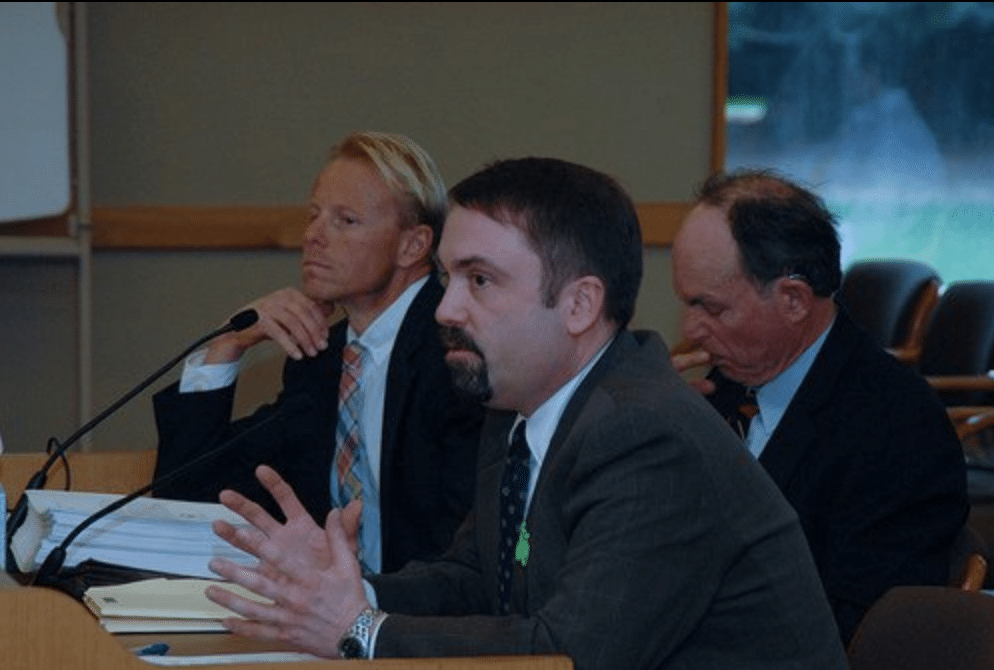
Bob Mionske testifying in support of Stop as Yield, 2009. Photo: Jonathan Maus, BikePortland.
Until this year.
On June 25th, Oregon joined a growing list of states passing Stop as Yield legislation, becoming the fourth state to pass a Stop as Yield law. But while Oregon cyclists are rightfully celebrating this virtually unexpected legislative victory, it’s not actually the law in Oregon yet.
- Related Article: It’s Time to Greenlight Stop As Yield
- Related Article: Oregon’s Stop As Yield Law Hits the Final Stretch
- BikePortland’s entire series of articles chronicling Oregon’s Stop as Yield efforts can be found here.
Which makes this the perfect time to explain how the new Stop as Yield law works, and when it will take effect.
Stop as Yield—Is it Legal Now?
Not yet. Stop as Yield law won’t actually be the law in Oregon until January 1st, 2020.
This means that you can still be ticketed if you don’t come to a complete stop at every stop sign. It also means that the police can still conduct as many stop sign stings as they want. And finally, it means that you can still be found to be at fault if you roll a stop sign and are involved in a collision.
Right up until January 1st.
On January 1st, Stop as Yield will become the law in Oregon, and we’ll all be operating under a different set of rules.
Stop as Yield—What Is It?
In most states, when a cyclist is approaching an intersection controlled by a stop sign, the cyclist must come to a full and complete stop at the stop sign, and must wait at the stop sign until there is no approaching cross-traffic with the right of way.
This makes sense when cross-traffic has the right of way. But what about those situations where there is no cross-traffic? In most states, cyclists have to stop anyway.
Motorists have to stop too, of course, but the difference is that unlike cyclists, motorists don’t have to use their muscle power to get the car back up to speed, and unlike cyclists, motorists are not at their least stable and most vulnerable as they’re entering the intersection.
Stop as Yield recognizes the inherent differences between bicycles and automobiles, by allowing cyclists to treat a stop sign as if it is a yield sign. Under a Stop as Yield law, when a cyclist approaches an intersection controlled by a stop sign, the cyclist must still stop if there is approaching cross-traffic with the right of way. However, if there is no approaching cross-traffic with the right of way, the cyclist is not required to stop, and may instead roll past the sign and enter the intersection. This is exactly how a yield sign works, which is why the law is called “Stop as Yield.”
A related concept is “Red as Stop.” Under a Red as Stop law, a cyclist approaching an intersection controlled by a red light must stop at the red light like all other traffic, but after coming to a full and complete stop, may continue across the intersection if there is no approaching cross-traffic with the right of way. While Red as Stop is the law in Idaho, it is not the law in Oregon. This means that you can still be ticketed for not stopping at a steady red light, both now and after December 31st.
Stop as Yield, Oregon Style
So that’s the concept. But now that a law has been passed in Oregon, let’s look at the specifics of how the law will work here. You need to know this, because how you approach and enter an intersection will make the difference between a legal “Stop as Yield” and an illegal “Improper entry into an intersection.”
Under the new Stop as Yield law, if a cyclist who is approaching an intersection where traffic is controlled by a stop sign slows to a safe speed, the cyclist may do any of the following without violating the law:
- proceed through the intersection without stopping;
- make a right or left turn into a two-way street;
- make a right or a left turn into a one-way street in the direction of traffic upon the one-way street.
However, the cyclist will be violating the law by making an improper entry into the intersection if the cyclist:
- Fails to yield the right of way to traffic lawfully within the intersection or approaching so close as to constitute an immediate hazard;
- Disobeys the directions of a police officer or flagger;
- Fails to exercise care to avoid an accident; or
- Fails to yield the right of way to a pedestrian in an intersection or crosswalk.
You can read the entire Stop as Yield law here.
Flashing Red as Stop, Oregon Style
What about red lights? Unlike Idaho, Oregon’s law does not have a “Red as Stop” provision, and cyclists will continue to be required by law to come to a complete stop at all steady red lights. However, the new law does allow a flashing red light to be treated as a yield sign. Under the new law, if a cyclist who is approaching an intersection where traffic is controlled by a flashing red light slows to a safe speed, the cyclist may do any of the following without violating the law:
- proceed through the intersection without stopping;
- make a right or left turn into a two-way street;
- make a right or a left turn into a one-way street in the direction of traffic upon the one-way street.
However, the cyclist will be violating the law if the cyclist:
- Fails to yield the right of way to traffic lawfully within the intersection or approaching so close as to constitute an immediate hazard;
- Disobeys the directions of a police officer;
- Fails to exercise care to avoid an accident; or
- Fails to yield the right of way to a pedestrian in an intersection or crosswalk.
You can read the entire Stop as Yield law here.
Wait a Minute—“Slows to a Safe Speed”? What does that mean?
This is important to understand, because it makes the difference between a legal “Stop as Yield,” and an illegal “Improper entry into an intersection.” And yet, “slows to a safe speed” is subject to interpretation—what exactly does it mean? In Oregon, it means “a speed reasonable for the existing conditions” (See: ORS 811.260(16), Yield signs). But this is still subject to interpretation.
This is where you’re going to have to use some “common sense,” because you have to make a subjective decision about what “slows to a safe speed means,” but your subjective decision can and will be judged by police and the courts. If a police officer decides that you didn’t “slow to a safe speed” when you rode past that stop sign, you can be ticketed, and then you will have to either pay the fine, or convince a judge that you actually did “slow to a safe speed” before entering the intersection.
And if you’re standing before a judge trying to explain why your roll past the stop sign was legal, the standard you’re going to be judged by is the “reasonable person” standard. The “reasonable person” is a hypothetical “reasonable person” in your community, and the reasonable person standard is based on what that hypothetical person would do in that situation.
Let’s see how that works. If you’re riding on a street where the speed limit is 25, and as you approach a stop sign at an intersection you slow to 15 before rolling past the stop sign, there will be two questions before the court: (1) Did you slow (2) to a “safe speed”? Obviously, by slowing from 25 to 15, you slowed down as you approached the stop sign. But was it a “safe speed”? Now the question before the court will be whether a “reasonable person in your community” (in this case, the judge) would consider 15 to be a safe speed for existing conditions.
Now let’s say you’re riding at 25 MPH or faster, and rather than slowing, you continue riding at 25 right into the intersection. The questions before the court are still (1) Did you slow (2) to a “safe speed”? Only now, you didn’t slow, so the court may view that in itself as placing you in violation of the law. And assuming that the judge hasn’t already decided that you’re guilty, the question before the court will still be whether a “reasonable person in your community” (again, for all practical purposes, the judge) would consider 25 to be a reasonable speed when entering that intersection under the existing conditions.
This is why you’re going to have to use “common sense” when you approach a stop sign (or a flashing red light) at an intersection.
Why is there an emphasis on slowing “to a safe speed”?
Regardless of whether the traffic control device you are approaching is a stop sign or a yield sign, the purpose of the sign is to alert you that you need to determine whether it is safe to proceed before entering an intersection.
In a 1951 Minnesota case in which a cyclist and a motorist collided after both ran their respective stop signs, the court held that “One of the main purposes of the statute requiring a vehicle to stop before entering a through highway is to afford the driver a reasonable opportunity to observe approaching traffic on the highway to be crossed or entered…It was not enough to stop at the ‘Stop’ sign. It was their duty to stop and observe where stopping and observing would be efficient and meet the purpose of the ‘Stop’ warning.” Bohnen v. Gorr, 47 N.W. 2d 459 (Minn. 1951).
And in an 1897 out of Pennsylvania, the court held that “the law requires a full stop, not only for the sake of time, and opportunity for observation, but to secure undivided attention, and the substantial, and not merely perfunctory, performance of the duty to look and listen.” Robertson v. Pennsylvania R. Co., 36A. 403 (Pa 1897).
While neither of these cases are controlling law in Oregon, and both are dealing with the purpose of stopping at a stop sign, they provide substantial insight into the importance courts have placed on the duty to observe existing conditions before entering an intersection. In the context of a yield sign under Oregon law, this means that the cyclist has a legal duty to observe existing conditions before entering the intersection, and only has a legal right to proceed if it is safe to do so. Thus, the purpose of requiring cyclists to slow to a reasonable speed before entering an intersection is to give the cyclist time to observe existing conditions before entering the intersection, and wait if required by existing conditions and the law until it is safe and legal to enter the intersection.
Put another way, under Oregon’s new Stop as Yield law, a “reasonable person” would slow to a safe speed and observe existing conditions before entering the intersection, and after observing existing conditions, would only enter the intersection when it is safe and legal to do so—and that is the standard that the legality of your own yields will be judged by.
What about “Right of Way”?
Another way you can still run afoul of the law is if you fail to yield the right of way after rolling past that stop sign. But what exactly is “right of way”?
In Oregon, “‘Right of way’ means the right of one vehicle or pedestrian to proceed in a lawful manner in preference to another vehicle or pedestrian approaching under such circumstances of direction, speed and proximity as to give rise to danger of collision unless one grants precedence to the other.” (See: ORS 801.440, “Right of way”)
In plain English, “right of way” means that the person who has the right of way has a legal right to proceed that takes precedence over your own direction of travel.
How important is this concept to Stop as Yield? It’s right there in the name: Stop as Yield. The idea is this: while you may generally be allowed to legally roll past the stop sign under Stop as Yield, you must still yield the right of way “to traffic lawfully within the intersection,” to traffic “approaching so close as to constitute an immediate hazard” or “to a pedestrian in an intersection or crosswalk.” You must also “exercise care to avoid an accident.”
Let’s break down what all of this means. Practically speaking, while you aren’t required to come to a complete stop at a stop sign just because it’s a stop sign, you are still required to yield the right of way to others under the circumstances described in the law. And practically speaking, while yielding doesn’t necessarily require a complete stop every time, there may be some situations where, if necessary for safety, yielding to others does require a complete stop (See: ORS 811.260(16), Yield signs). And guess who decides what is required in a given situation? You make a subjective decision about what the situation requires. But as before, to avoid citations, or at least a conviction on a citation, you will want to make sure that your subjective decision seems reasonable to the police or the “reasonable person” (read: Judge).
What exactly is a complete stop, anyway?
In Oregon, “stop” means “the complete cessation of movement.” (See: ORS 801.510, “Stop”). Taken to its extreme, a literal interpretation would lead to absurd results. For example, does the law mean that you must remain completely motionless, like a statue? Of course not. Taken to the other extreme, slowing but continuing to roll through the intersection is not a stop.
Well, what about a track stand? Although track stands are accomplished through the use of some minor motion, they still fall within the legal meaning of stop. You’re not required by any law to put a foot down when you come to a stop.
The bottom line: Under some circumstances, you may occasionally be required to come to a complete stop when yielding—even under the new Stop as Yield law—if existing conditions make a complete stop necessary for safety. Some examples of circumstances requiring a full stop would be when there is heavy cross-traffic that has the right of way, or when a police officer or a flagger controlling traffic direct you to stop. However, it’s likely that the legal requirement to stop when yielding will only be an occasional requirement, rather than the norm.
So what’s the penalty if I break Oregon’s Stop as Yield law?
You really want to go there? Violations of the Stop as Yield Law will be a Class D traffic violation, currently subject to a minimum fine of $65, a maximum fine of $250, and a presumptive fine of $115. The presumptive fine is the amount you can pay on the ticket without having to appear in court, unless the law or the court requires the defendant to appear (see ORS 153.061). The court can impose a higher fine, up to the maximum statutory sanction, if the law or the court requires the defendant to appear.
Is there anything else Oregon cyclists should know?
There sure is, and it’s the most important thing. While tickets are the most common concern of cyclists who roll stops, there’s a more serious concern that cyclists should be aware of: What happens if a cyclist illegally rolls through a stop sign and gets hit by a car? As it currently sits, the cyclist is in a compromised position. The cyclist’s violation of the law will almost certainly become an issue with the driver’s insurance company, particularly if there is a police report stating that the cyclist broke the law. If there is any way that the insurance company can minimize a payout on a claim, you can bet they will go for it. The bottom line is that if you break the law by rolling through a stop sign before Stop as Yield becomes law, and you get hit by a car, you’re going to be fighting an uphill battle to be compensated for your injuries.
This is true now, and it will continue to be true after Stop as Yield becomes law, because even under the Stop as Yield law, the cyclist is still required to slow, yield, and enter the intersection lawfully. Once Stop as Yield becomes legal (on January 1, 2020), the bottom line is still going to be that if you break the Stop as Yield law by entering the intersection illegally, and you get hit by a car, you’re still going to be fighting an uphill battle to be compensated for your injuries.
The best way to protect yourself legally, even after Stop as Yield becomes law, is always going to be to ride within what the law allows.
***
For more information about car-on-bike collisions from our Oregon bicycle accident lawyers, read:
Related Article: What To Do If You Are Involved In An Oregon Bicycle Accident
Related Article: How to Avoid Car-On-Bike Accidents
Related Article: Why We Say “Bicycle Accidents” Are Not Accidents






